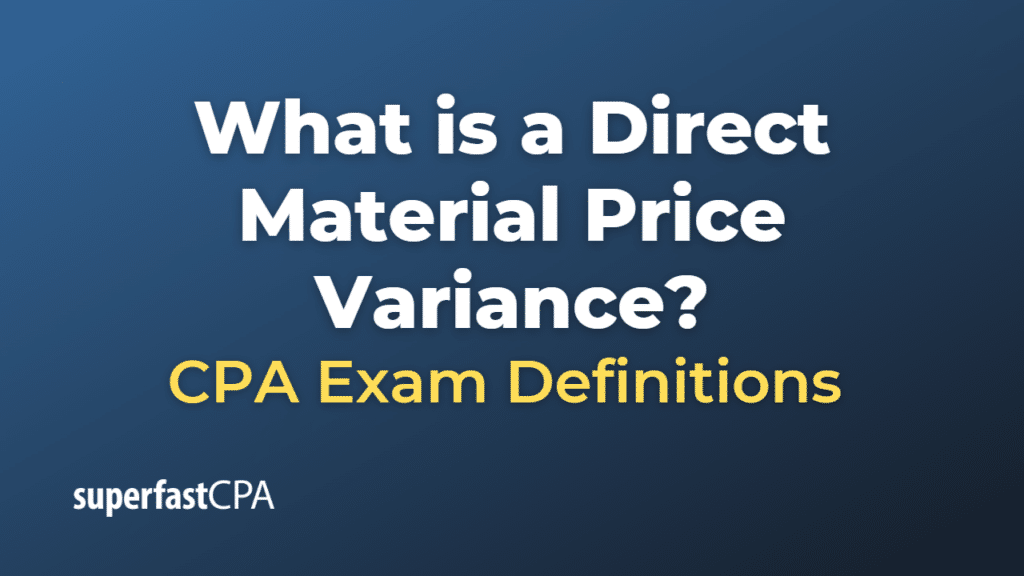Direct Material Price Variance
Direct Material Price Variance is a term used in cost accounting to describe the difference between the actual cost of direct materials and the standard (expected) cost. It is used to measure how well a business is keeping its material costs under control.
The formula for calculating the Direct Material Price Variance is:
Material Price Variance = (Actual Price per Unit – Standard Price per Unit) * Actual Quantity Used
If the variance is positive, it means that the actual price of the material is higher than the standard price, indicating that the company spent more than expected on materials. This is considered an unfavorable variance.
If the variance is negative, it means that the actual price of the material is lower than the standard price, indicating that the company spent less than expected on materials. This is considered a favorable variance.
Material price variance is important because it can help identify if a company is paying more for its materials than it should be, which can affect profitability. It can be influenced by factors such as changes in supplier prices, quantity discounts, changes in market conditions, or purchasing department efficiency.
Example of a Direct Material Price Variance
Let’s consider a company that manufactures plastic toys. They need plastic as a raw material, and their standard cost for plastic is $5 per kilogram.
Now, suppose in a particular month they purchase 2,000 kilograms of plastic, but due to market conditions, the actual price they pay is $6 per kilogram.
The Direct Material Price Variance can be calculated as follows:
Material Price Variance = (Actual Price per Unit – Standard Price per Unit) * Actual Quantity Used
= ($6/kg – $5/kg) * 2,000 kg
= $1/kg * 2,000 kg
= $2,000
The positive variance of $2,000 indicates that the company spent $2,000 more on direct materials than it had planned according to its standard cost. This is an unfavorable variance as the actual costs exceeded the expected costs.
This might prompt the company to investigate the reasons behind the increased cost – perhaps there’s a supply shortage driving up prices, or maybe they need to negotiate better prices with their suppliers. Understanding the cause can help the company manage its costs better in the future.













